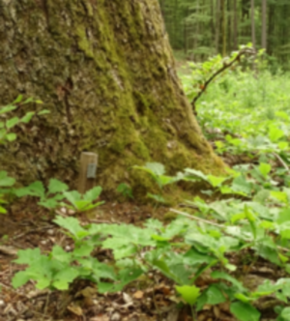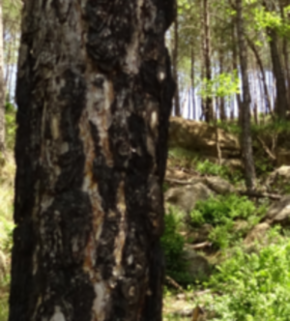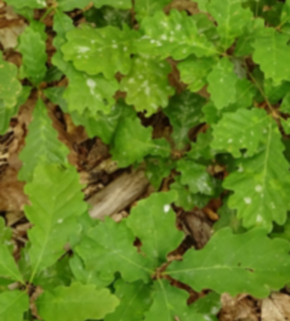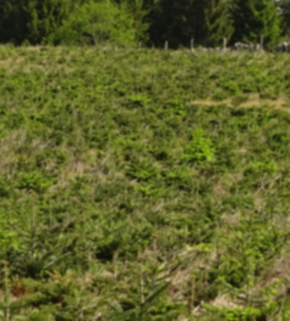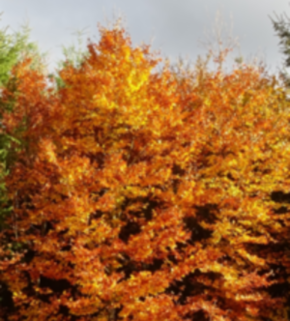Best Practice Knowledge Base
1. Afforestation and Reforestation
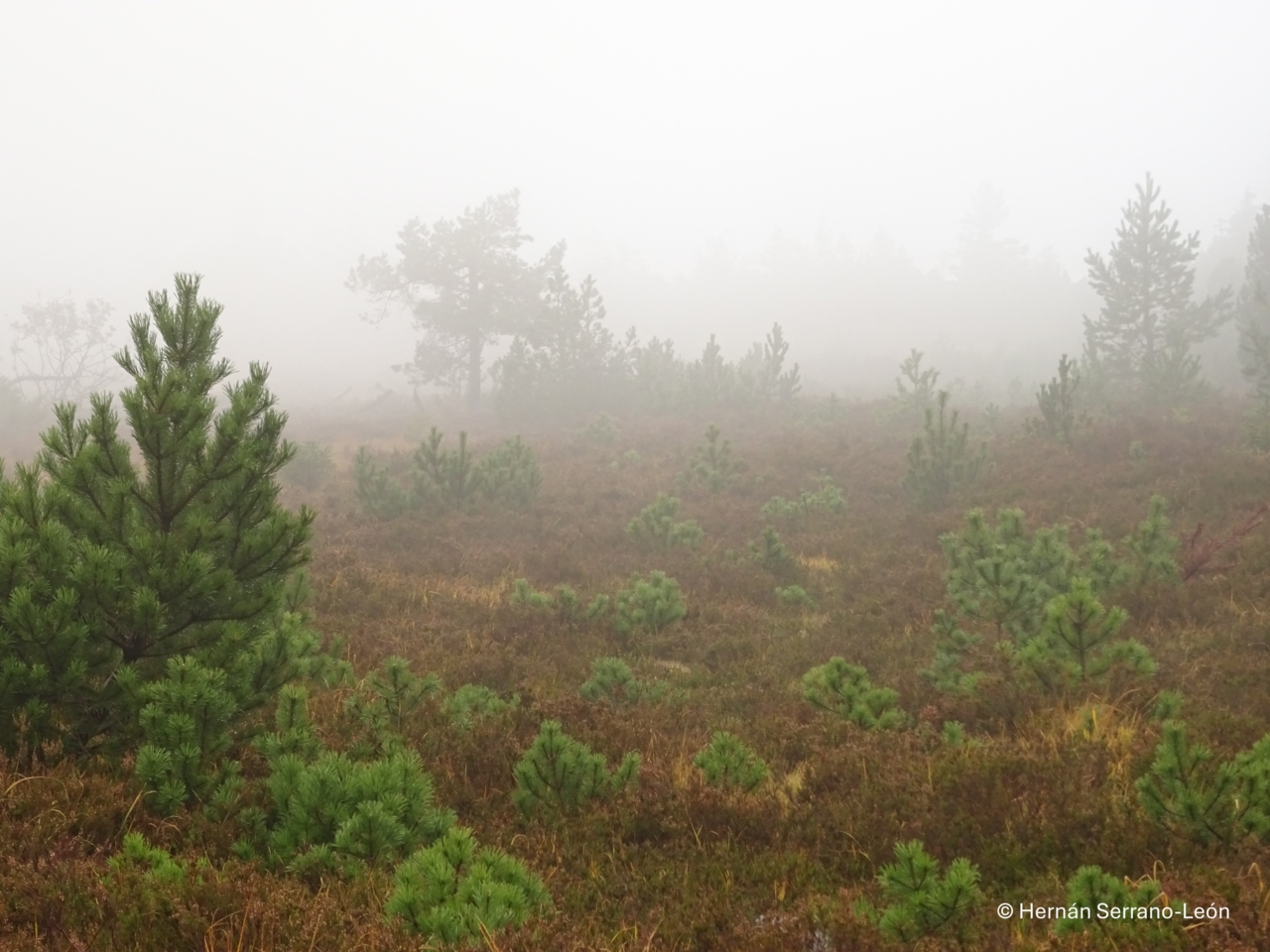
Scots pine regeneration, National Park Schwarzwald (© Hernán Serrano-León)
Afforestation and reforestation are key strategies in forest restoration. Afforestation involves establishing trees in areas that were not previously forested, while reforestation restores tree cover in deforested lands. Both approaches contribute to reversing deforestation, aiding in carbon sequestration, soil conservation, enhancing biodiversity, and improving ecosystem services, making them essential for sustainable forest management and climate change mitigation. Common practices include site preparation, selecting adequate tree species, promoting natural regeneration, seeding or planting, and ongoing maintenance measures such as watering, weeding, and monitoring for pests or diseases.
1.1 Natural regeneration
Natural regeneration is a cost-effective approach to forest restoration that allows trees to regrow naturally from existing seed sources or root systems. While it may take longer than active planting, natural regeneration often results in forests that are better adapted to local conditions.
1.2 Site preparation
Site preparation involves clearing and modifying an area to optimize conditions for planting or natural tree species regeneration. Among others, it allows to improve soil conditions, reduce competition from undesired species, and ensure better seedling survival. Key aspects include controlling vegetation, improving soil structure, and managing water availability. Proper site preparation increases the chances of success in forest restoration by promoting healthier growth and establishing a more resilient ecosystem.
1.3 Weeding
Weeding refers to the removal or management of competing vegetation to ensure the successful establishment and growth of planted or naturally regenerating trees. Its importance lies in reducing competition for essential resources such as light, water, and nutrients, particularly during the critical early stages of tree development. Key aspects to consider include the timing (to avoid damaging young trees), the method used (manual, mechanical, or chemical), the type of competing vegetation, and the specific site and species requirements.
1.4 Mulching
In the context of site preparation for tree planting, mulching involves applying a layer of organic or synthetic material to the soil surface around planting areas or seedlings. This technique is widely used to improve soil conditions, suppress weeds, retain soil moisture, prevent soil erosion, andmoderate soil temperature, all of which contribute to successful tree establishment and soil conservation. In general, the suppressive effect of the mulch bed is determined by its depth along the soil profile.
1.5 Prescribed burning
The use of fire as a site preparation method is a widely adopted practice to remove grass and shrub vegetation before regenerating tree species. Controlled burns are applied to reduce fuel loads, eliminate competing vegetation, and prepare the site for tree planting. By burning off grass and shrubs, fire clears the ground, reduces competition for water and nutrients, and can improve soil conditions by releasing nutrients stored in the vegetation. This technique not only facilitates the establishment and growth of new tree species but also enhances seedbed conditions by creating a mineral soil seedbed that is optimal for germination. Careful planning is essential to ensure that fire is applied under appropriate weather conditions to prevent unintended damage to the ecosystem.
1.6 Tilling
Tilling (also partly known as plowing, ploughing, disking, auguring, or subsoiling) involves breaking up compacted soils to improve conditions for root establishment and seedling growth. It aims at loosening the soil structure, and enhancing aeration and water infiltration, which are crucial for seedlings to access nutrients and moisture. By disrupting soil compaction, tilling also reduces physical barriers to root penetration, enabling seedlings to develop more robust root systems. This technique is particularly beneficial in degraded or previously cultivated lands where compaction from heavy machinery or agricultural practices may hinder tree regeneration. Properly implemented, it creates favorable micro-sites for tree establishment, but care must be taken to avoid excessive soil disturbance, erosion risks, or disruption of beneficial soil organisms.
1.7 Seeding
Seeding is a form of artificial regeneration that involves the direct application of seeds to reestablish vegetation and promote forest recovery. This method is particularly useful for large-scale projects or areas with difficult access, where planting individual seedlings may be impractical or too expensive. Seeding is cost-effective but may have lower initial success rates compared to planting seedlings, as germination depends on factors like soil quality, moisture, and protection from predators. However, in some ways it mimics natural regeneration processes and can result in resilient, site-adapted forests over time. For successful application, practitioners should consider local ecological conditions, seed availability, and potential legal or ecological restrictions on seed sources and site preparation techniques.
1.8. Planting
Tree planting is a form of artificial regeneration, aiming to re-establish tree cover in degraded or deforested areas. This approach can accelerate forest recovery, enhance biodiversity, and contribute to ecosystem services such as carbon sequestration and erosion control. Key considerations include choosing adequate species and reproductive material, preparing the site to improve seedling survival, handling of the seedlings until planting, ensuring appropriate spacing, and implementing measures to control competition from weeds and protect against pests andherbivory. Effective monitoring and maintenance adequate to site conditions and climate (e.g., weeding, watering, replacing failed seedlings), are essential to ensure the success.
1.9 Group planting
Group planting in forest restoration involves planting groups of trees rather than evenly spacing individual trees across an entire area. This mimics natural regeneration patterns, creating microhabitats that support biodiversity and protect young trees from harsh environmental conditions like wind or excessive sunlight, while promoting spatial heterogeneity and biodiversity at the stand scale. Implementation requires careful planning of the spatial design and distribution of the seedlings within the groups, as well as species selection, planting densities, and site preparation. As for traditional row planting, proper maintenance through weed control and monitoring is essential to ensure successful establishment.
1.10 Mixed-species planting
Mixed-species planting in forest restoration involves establishing multiple tree species together, rather than pure plantations or monocultures. This approach mimics natural forest ecosystems, and is expected to enhance biodiversity, increase resilience to disturbances, and foster ecosystem services. For implementation, relevant aspects include the species composition, considering their compatibility and complementarity in resource utilization as well as in their ecological roles, in conjunction with site conditions. In particular, mixed-species planting requires a strategic layout to optimize interspecies interactions and avoid competition.
1.11 Irrigation
Irrigation plays a vital role in ensuring the successful establishment and growth of young trees in challenging environments. In areas with insufficient natural rainfall or degraded soils, supplemental watering provides essential moisture to support seed germination, root development, and early plant growth. Key factors to consider when designing an irrigation system include the water source, soil type, climate, and plant needs, ensuring efficient and sustainable implementation. Carefully managed irrigation systems may optimize water use, minimize waste, and reduce stress on fragile ecosystems.


